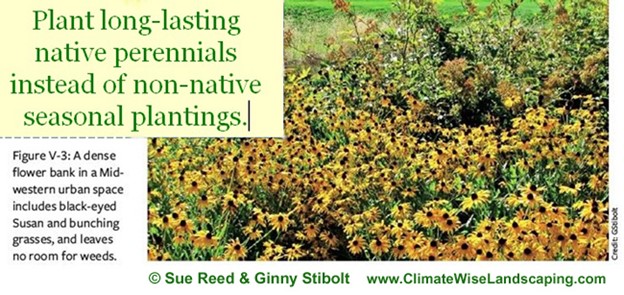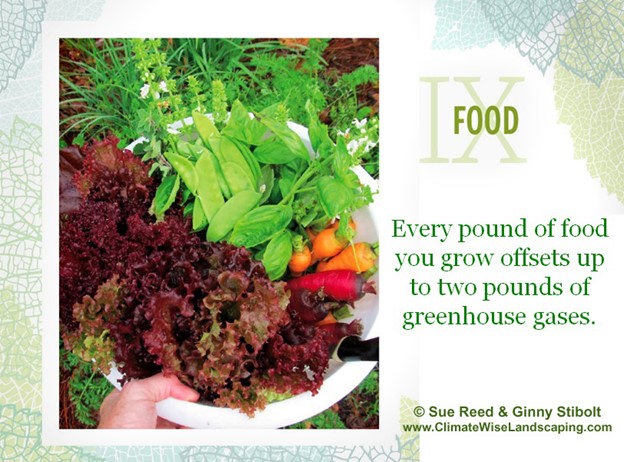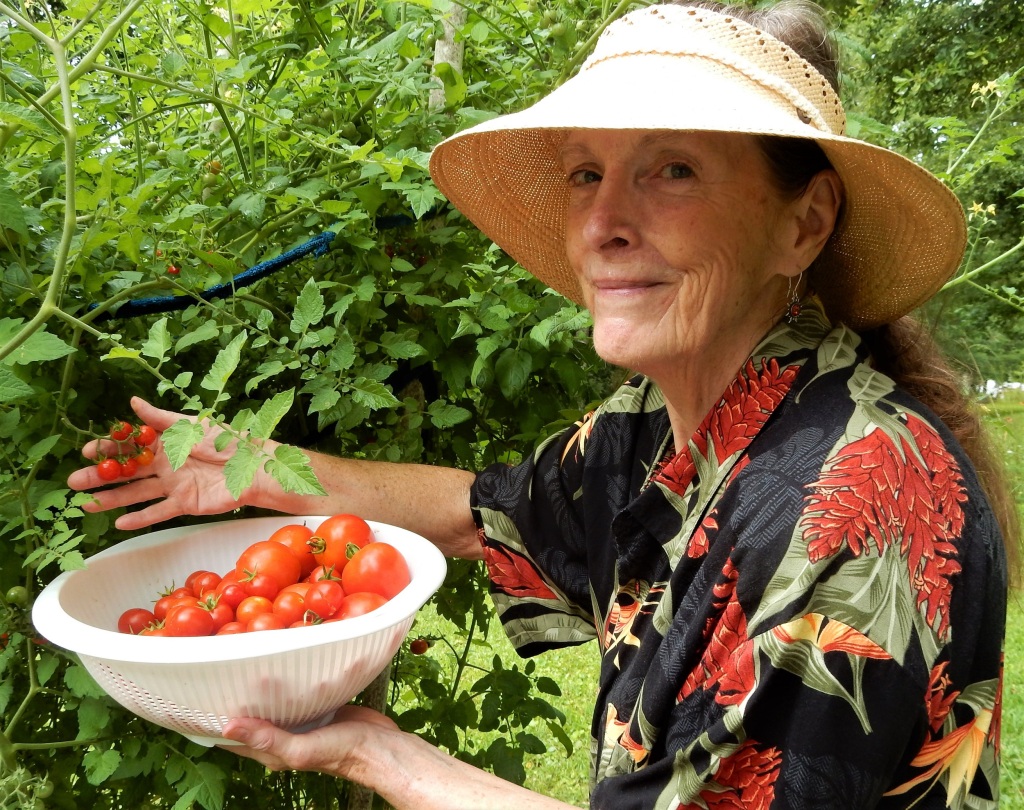By Ginny Stibolt, coauthor (with Sue Reed) of Climate-Wise Landscaping: Practical Actions for a Sustainable Future.
Use code CWL23 for a special discount price on this new book through October 31, 2023.
Sue Reed and I are pleased to announce that the second edition of our award-winning book has been released—this time with University Press of Florida. The need for this book is greater than ever. In writing this book, our highest priority was to create a list of earth-friendly actions that people can take right now in their own yards and in their communities. Every action in the book fulfills at least one of these three criteria:
1) to help landscapes become more resilient, so they can better survive climate change;
2) to help wildlife survive climate change;
3) to mitigate climate change.
For each of the actions, the book explains not only how to do it, but also why or how the action is earth friendly. While each of the actions may seem small on its own, there are many millions of home gardeners and commercial landscapers, and together our combined actions can make a significant positive change to help heal our planet.
Rethinking Standard Gardening Advice
While writing the book, we found that we had to redefine standard gardening and landscaping advice to consider the environmental impact of each landscaping activity.
Here are three examples of how the book changed our thinking:
Saving Water
As gardeners, we design water-wise landscapes to lessen the pressure on local water supply sources. But when we think about the big picture of municipal water supplies, it takes a lot of energy to deliver water to our taps with adequate pressure for our use. So, when we reduce water usage in the landscape, we not only help protect local water sources but we also reduce the greenhouse gas emissions that result from delivering that safe drinking water to our taps.

Caring for the Soil
As gardeners, when we think about soil we emphasize enriching the soil or balancing the soil chemistry for particular plants in the garden. However, on a worldwide basis, soil sequesters four times more carbon than all the terrestrial plants—including the rainforests. So, caring for the soil in a climate-wise way means considering all the soils, not just those in our gardens. One of the easiest actions to better care for soil is to stop the landscape-wide applications of pesticides and fertilizers that lawn-care companies promote to maintain a monoculture turf grass lawn. Rethinking the lawn is one of the easiest and most effective ways to make our landscapes more earth friendly; this is why “Lawns” is the first chapter in the book.
Another action to protect soil is to stop seasonal plantings every few months, because every time the soil is disturbed it loses some of its stored carbon to the atmosphere. A more climate-wise approach is to create more densely planted, long-lasting plantings that live for years. These plantings could be a combination of native perennials from ground covers, wildflowers, ferns, and bunching grasses to trees and shrubs. This way the soil can remain mostly undisturbed after the initial planting and hold onto its carbon.

Growing More Food
Growing some of your food is a great family project and is good for your health because you control the food from seed to plate. When Sue and I started thinking about this book, growing food was not something we had considered as a climate-wise action. But our research for this book showed that even though it takes lots of energy and resources to grow food crops, typical commercial agriculture systems waste about 30% of the food grown in fields during transport and handling. And there is a heavy climate footprint for transporting food to local grocery stores in mostly refrigerated trucks and containers. So growing food locally is the climate-wise choice, because every pound of food that you grow or buy from local growers offsets up to two pounds of greenhouse gas emissions due to transportation and waste.

Our Response: No Debating or Hand-Wringing
Instead, we basically said, “Let’s roll up our sleeves and get busy, because there is #NoPlanetB!” We were pleased that Doug Tallamy wrote the Foreword, in which he concluded, “Read this book carefully. Everything you need to know to help heal our relationship with planet Earth and empower you to make a much-needed difference is within these pages.” We agree with his advice!
Ginny Stibolt is a lifelong gardener with a Master of Science degree in botany from the University of Maryland. She’s been writing about her adventures in Florida gardening since she moved to the state in 2004, including six books and hundreds of articles. She manages the Sustainable Gardening for Florida and Climate-Wise Landscaping Facebook pages and writes for her own blog, www.GreenGardeningMatters.com.
Use code CWL23 for a special discount price on Climate-Wise Landscaping, valid through October 31, 2023.


